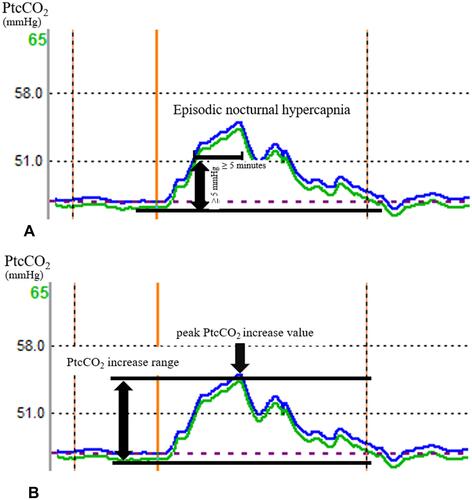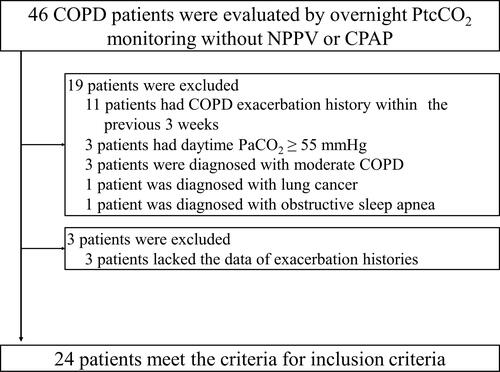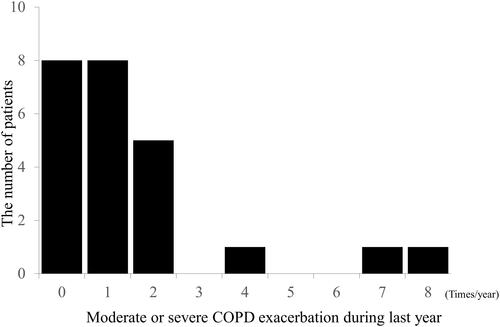Figures & data
Figure 1 Episodic nocturnal transcutaneous carbon dioxide pressure increase observed during overnight transcutaneous carbon dioxide pressure monitoring.

Table 1 Patient Characteristics
Figure 2 Flow diagram representing the patient selection process.

Figure 3 Frequency distribution chart of exacerbations in the analyzed population.

Table 2 Characteristics of Patients with and without Sleep-Associated Hypoventilation
Table 3 Characteristics of Patients with and without Episodic Nocturnal Hypercapnia
Table 4 Sensitivity, Specificity, and Odds Ratio Values of Sleep-Associated Hypoventilation and Episodic Nocturnal Hypercapnia for the Prediction of Chronic Obstructive Pulmonary Disease Exacerbations
Table 5 Sensitivity, Specificity, and Odds Ratio Values of Sleep-Associated Hypoventilation Criterion (1) and (2) for the Prediction of Chronic Obstructive Pulmonary Disease Exacerbations
